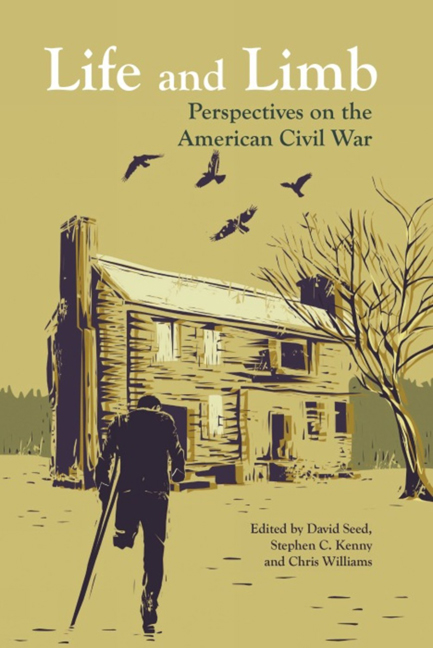Book contents
- Frontmatter
- Contents
- List of Illustrations
- Acknowledgements
- Introduction: Civil War Voices and Views
- MEDICAL AND SURGICAL MEMOIRS
- ACCOUNTS OF NURSING
- MEDICAL FACILITIES AND PATHOLOGY
- PHOTOGRAPHY
- Painful Looks: Reading Civil War Photographs
- Mathew Brady's Photographs: Pictures of the Dead at Antietam (New York Times)
- AMPUTATIONS AND PROSTHETIC LIMBS
- IN THE FIELD OF BATTLE
- POST-WAR NARRATIVES
- Contributors
- Select Bibliography
- Index
- Plates
Mathew Brady's Photographs: Pictures of the Dead at Antietam (New York Times)
from PHOTOGRAPHY
- Frontmatter
- Contents
- List of Illustrations
- Acknowledgements
- Introduction: Civil War Voices and Views
- MEDICAL AND SURGICAL MEMOIRS
- ACCOUNTS OF NURSING
- MEDICAL FACILITIES AND PATHOLOGY
- PHOTOGRAPHY
- Painful Looks: Reading Civil War Photographs
- Mathew Brady's Photographs: Pictures of the Dead at Antietam (New York Times)
- AMPUTATIONS AND PROSTHETIC LIMBS
- IN THE FIELD OF BATTLE
- POST-WAR NARRATIVES
- Contributors
- Select Bibliography
- Index
- Plates
Summary
The following is excerpted from the New York Times, October 20, 1862, p. 5. It is a report, by an unidentified writer, of a visit during the Civil War to Mathew B. Brady's Manhattan gallery and studio. Brady (1823?–1896), the leading American portrait photographer of his generation, and the most prominent photographic entrepreneur of the time, was exhibiting recently made battlefield views taken by employees and associates he had sent into the field. In 1862 the medium was not yet 25 years old, and the reporter probably lacked much personal familiarity with it – at one point speaking of it capturing likenesses on ‘canvas,’ as if the images were paintings. But he (or possibly she) gives a very accurate description of what was on show in the gallery, provides a sense of the wartime impact of the photographs and is remarkably perceptive.
The living that throng Broadway care little perhaps for the Dead at Antietam, but we fancy they would jostle less carelessly down the great thoroughfare, saunter less at their ease, were a few dripping bodies, fresh from the field, laid along the pavement. There would be a gathering up of skirts and a careful picking of way; conversation would be less lively, and the general air of pedestrians more subdued. As it is, the dead of the battlefield come to us very rarely, even in dreams. We see the list in the morning paper at breakfast but dismiss its recollection with coffee. There is a confused mass of names, but they are all strangers; we forget the horrible significance that dwells amid the jumble of type. The roll we read is being called over in Eternity, and pale, trembling lips are answering to it. Shadowy fingers point from the page to a field where even imagination is loth to follow. Each of these little names that the printer struck off so lightly last night, whistling over his work, and that we speak with a clip of the tongue, represents a bleeding, mangled corpse. It is a thunderbolt that will crash into some brain – a dull, dead, remorseless weight that will fall upon some heart, straining it to breaking. There is nothing very terrible to us, however, in the list, though our sensations might be different if the newspaper carrier left the names on the battle-field and the bodies at our doors instead.
- Type
- Chapter
- Information
- Life and LimbPerspectives on the American Civil War, pp. 106 - 108Publisher: Liverpool University PressPrint publication year: 2015

